DNS —short for “Domain Name System”— includes the settings that enable your website and email to be found on the internet. When you are working with website accounts, it’s common to have a need to add, edit, or delete DNS records associated with the account. The easiest way to manage DNS revisions for each website is through the cPanel Advanced Zone Editor. This tutorial will walk you through how to use these tools to update your DNS records.
Using the Zone Editor
The Zone Editor lets you make changes to records. You can add, edit, or delete records for your DNS.
Adding or Editing DNS Records
Adding DNS records can involve many different types of entries. Each entry should be added with care to avoid possible mistakes. Changes to DNS records may take up to 24 hours until they are recognized on the internet.
- Login to the cPanel
- Select the domain that you wish to edit, then click on Manage.If you’re adding a new record, you can click on +A Record, +CNAME Record, or +MX Record.

You will see a list of the DNS records currently added to that domain. You can click on an existing record in order to edit it.

Use the table below to understand the different records in DNS. Each record contains the following information:
Name Name your record. Be sure that it ends with your domain name and a period. Ex: record.inmotiontesting.com. TTL Time To Live. The record will exist on DNS servers around the world for this fixed amount of time. After it expires, they will need to re-contact the server to reset the record. This is set in seconds, so 14400 is 4 hours, which is a good standard. Setting the TTL too low can have an adverse effect on the server. Type Choose from the drop-down. There are A records, CNAMEs, and TXT records. Address The server address that the record refers to. It can be set as an IP address, a domain name, or a subdomain. TXT records will be set as text set within quotes. - After you have completed adding all of the information for each field of your chosen record, click on Save Record.
After you have completed adding a record, allow up to 24 hours for changes to complete.
Modifying or Deleting DNS Records
If you need to delete, the Zone Editor lists the records in a table. You will see the option toDELETE the record at the end of each record.
- Login to the cPanel.
- Scroll down to the Zone File Records.
- Find the record that you want to modify or delete. Click on Edit or Delete in the right column corresponding with the DNS record you’re trying to change.
- Confirm the edit by clicking on Edit if you are modifying a record, or confirm the delete by clicking on Delete for the record that you want to be deleted.
Resetting the Entries in the Zone Editor
The Zone Editor also includes the option to reset your zone records. You should only do this if you intend to remove all existing DNS entries for a particular domain. This is useful if you have a large number of records and you simply want to start over again.
- Login to the cPanel.
- Click on Zone Editor.
- Select a domain.
- Click on Actions to start opening the dialog for resetting the Zone file. The zone file is what contains your DNS records.

Make sure to read the warning before proceeding to remove all of your records.
- When you see the question, “Are you sure you want to erase all entries and revert to the default state?”, then click on Continue to proceed.
Note: The cPanel interface does change from time to time.The current version seen in the screenshots above is version 102.0 (build 19).Older versions of the cPanel may have 2 different editors – a Simple ZoneEditor and the Advanced Zone editor.Current cPanel releases with InMotion Hosting accounts have removed the Simple Zone Editor.
To learn more about the domain name system, check out The Complete Guide to DNS.
Get the best value on fast and customizable dedicated server hosting solutions. Choose from Managed Dedicated Servers with your choice of cPanel or Control Web Panel, or select a Bare Metal Server for complete server control via the command line.
DDoS Protection
Free Backup Storage
cPanel or Control Web Panel
Managed Server
Unmetered Bandwidth
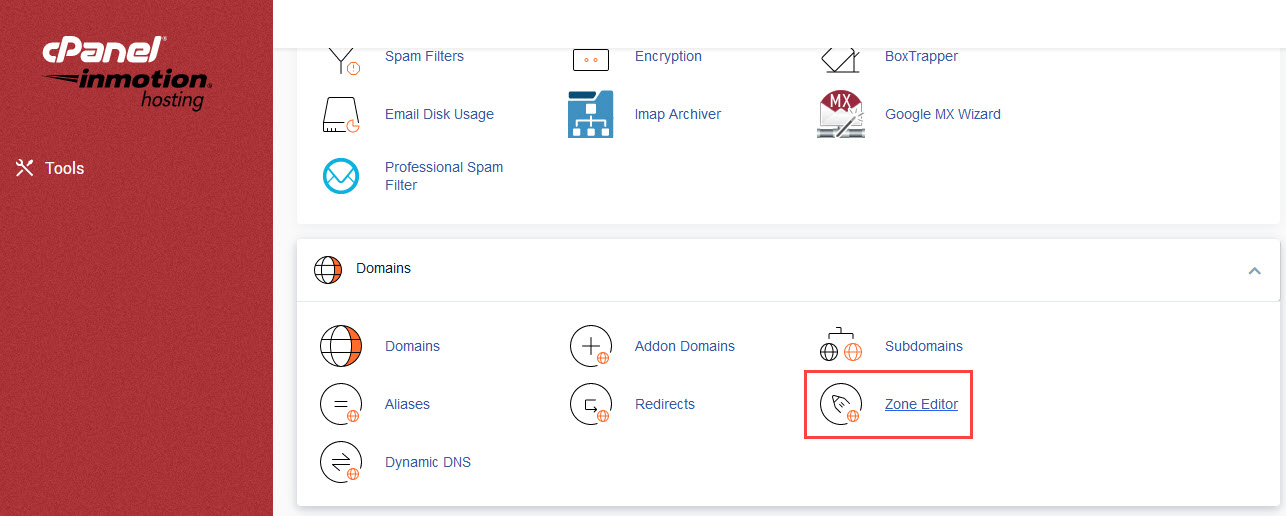
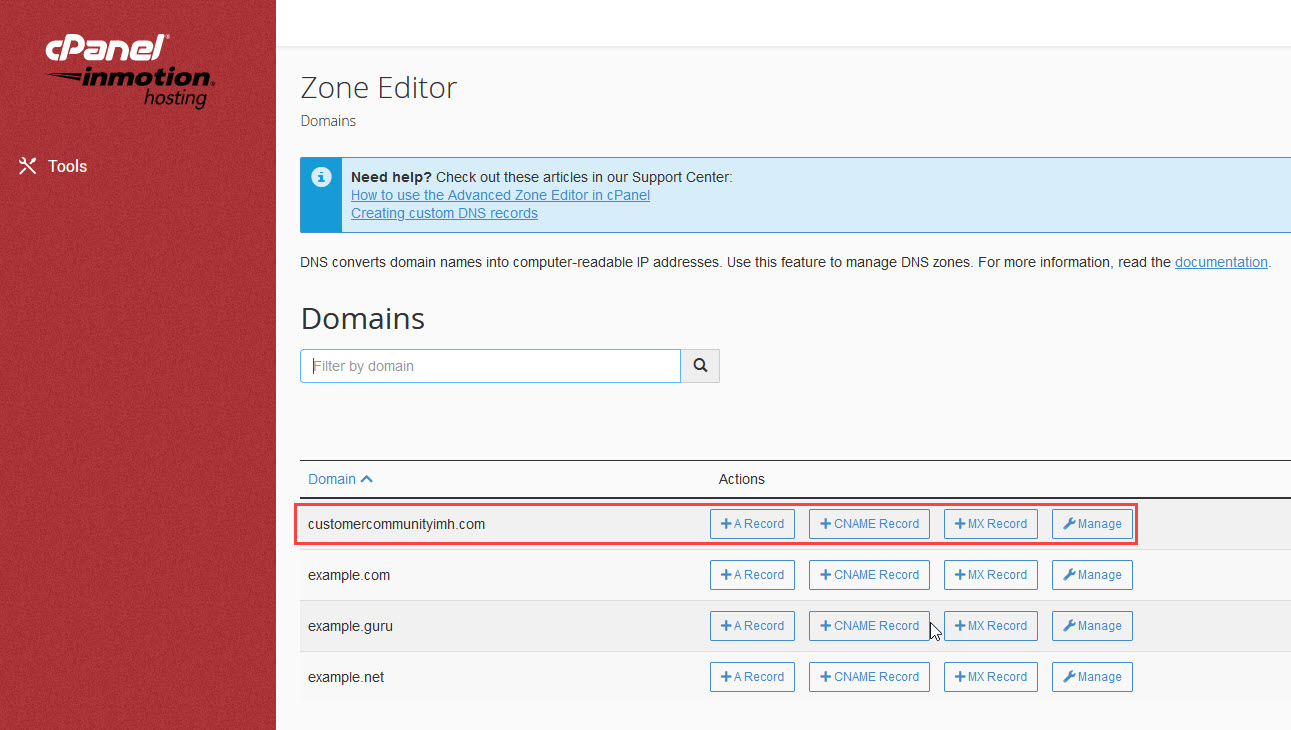
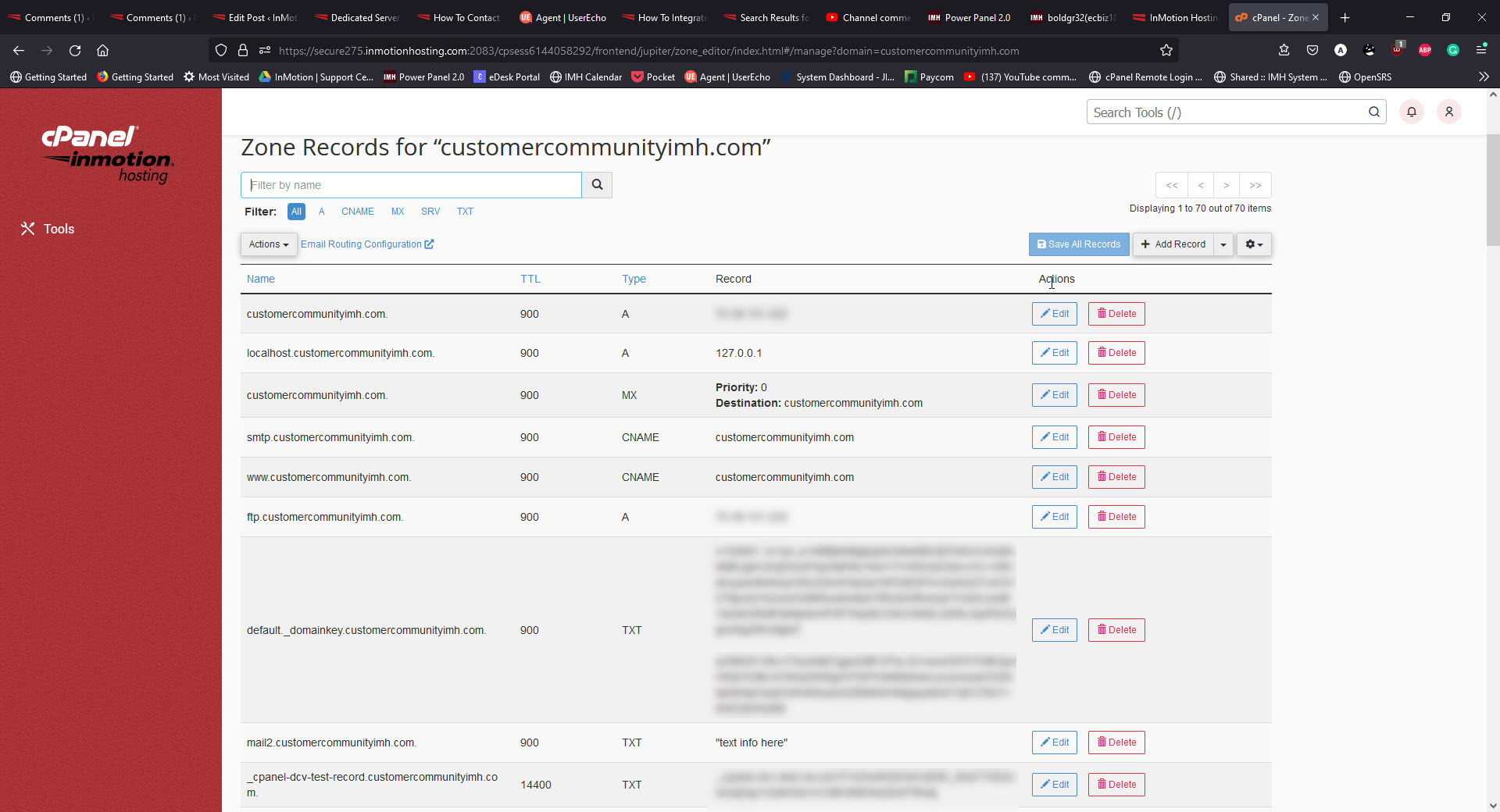
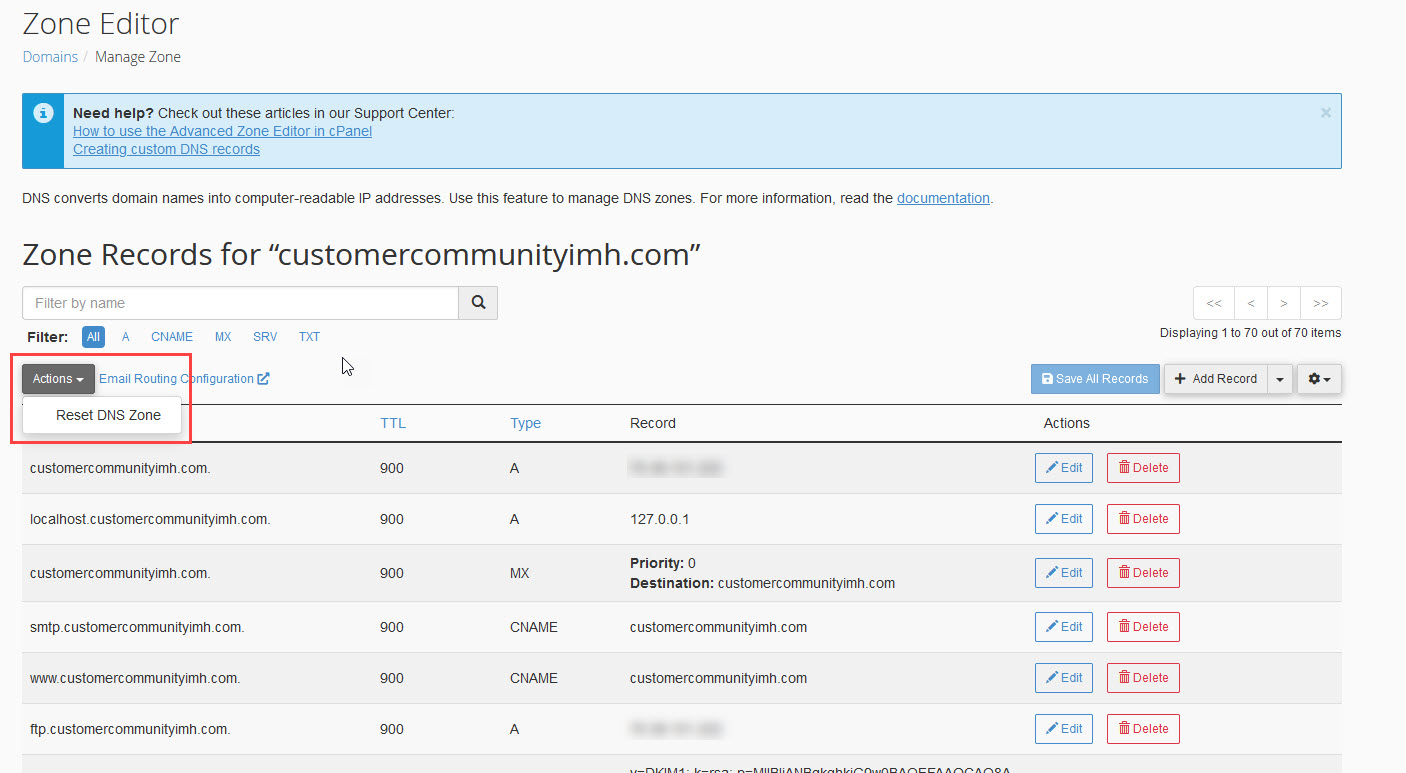
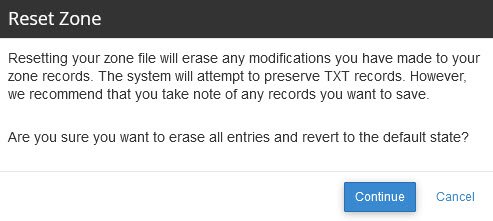

Simple Zone Editor does not exist.Zone Editor does.Please update tutorial.